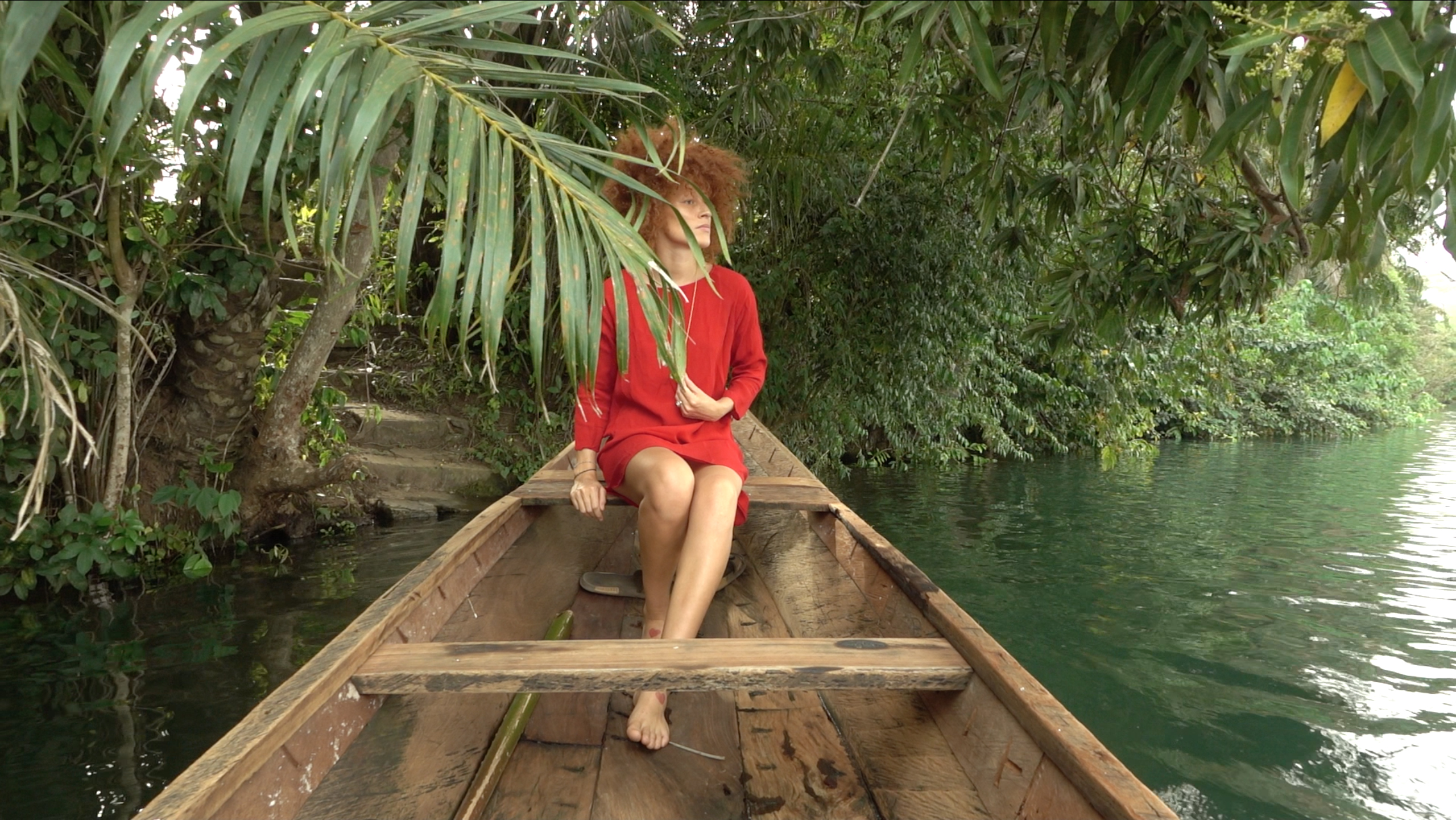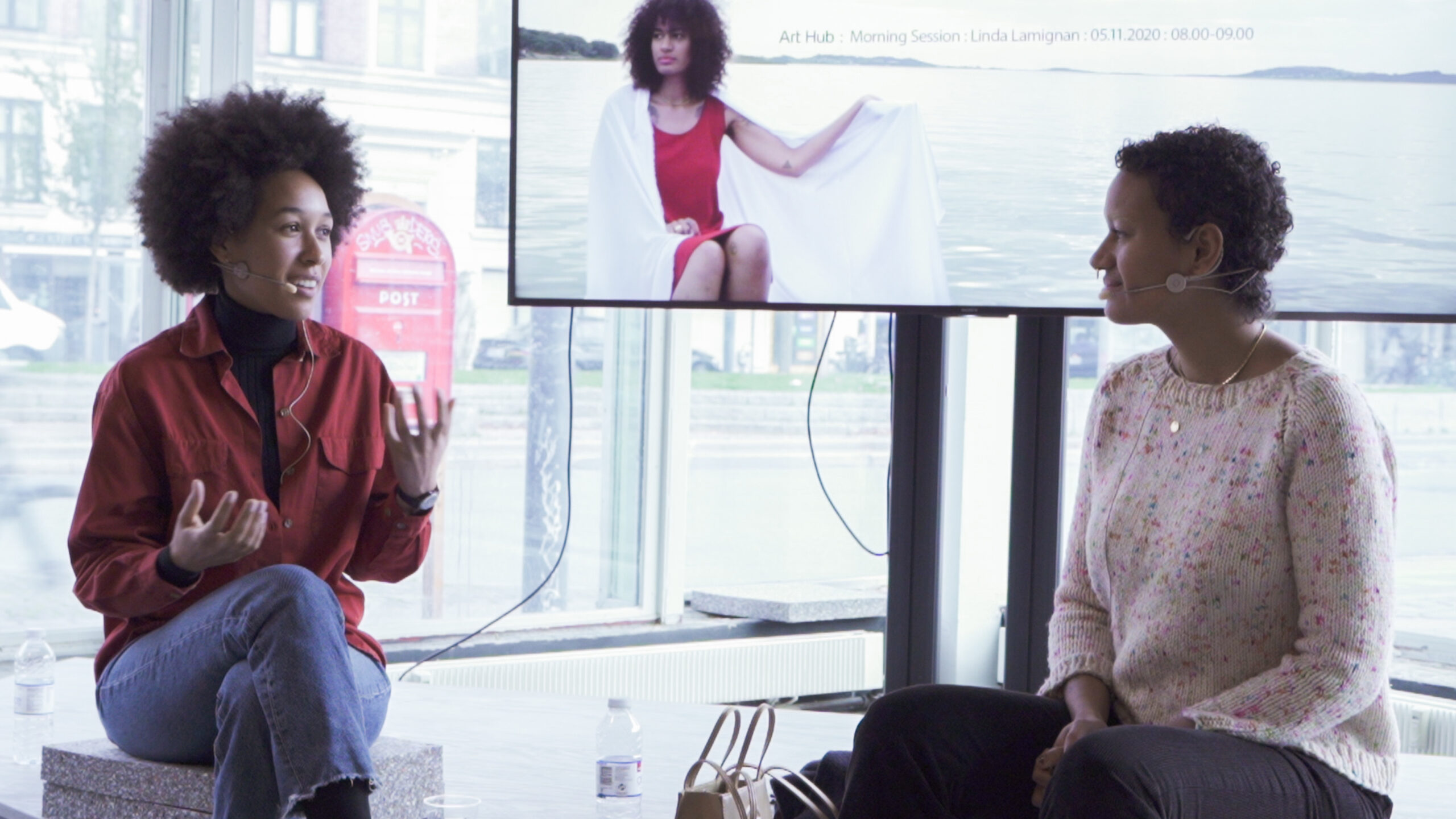Q&A: Linda Lamignan

Linda Lamignan: Between Our Body and the Breathing Earth, 2019. Still
-
Name:
-
Date:
-
Format:
Text
Below, you can read an excerpt of Linda Lamignan’s conversation with Nina Cramer at Morning Session in Art Hub on 5 November, 2020.
Nina Cramer: In your video work Between Our Body and the Breathing Earth, pt. 2, there is an element of some really violent colonial stories, and at the same time, there is healing when for example the oil as a material comes into contact with you, your body and the people you work with in your practice. Can you talk about some of your approaches to materials?
Linda Lamignan: Currently, I work mostly with petroleum wax and paraffin wax. I do this from an animistic point of view, where I look at materials as something with a memory, a story and perhaps its own intention. This is especially true of petroleum wax, which is a by-product of crude oil and which was once living creatures that with time and pressure was transformed into something else.
For example, I have made different types of amulets, where the wax acts as a kind of container for other materials. I have also made wall sculptures where I have used time, heat, gravity and movement to create a kind of mapping. Here, I have not had control over the wax once it melted. It has thus created its own form based on temperature and the external circumstances, but it becomes a form of mapping of a landscape.
In this work, I also look at the very brutal act of penetrating the earth’s surface to pull something out and all the wars and oppression that have taken place “in the name of oil”. I am very personally attached to this, because my mother comes from an area in Nigeria, Delta State, which has historically been exploited for its oil resources. My father comes from Stavanger, which is Norway’s Texas, the oil capital. Norway has built up a large part of its wealth in the oil industry. Norway’s pension funds in particular are some of the biggest stakeholders in Shell, which has a very brutal presence in the Nigerian oil industry. So I have these connections to two very different but interconnected parts of the oil industry, and I have thought about that a lot all my life.
When the petroleum wax and its history meets my body, it becomes a healing process for myself and for the material. It is a collaboration where the material is given the opportunity to become something else, gain a different value and tell a different story. With warmth and a little movement, wax can change and be shaped into many different forms, ideas, thoughts and futures.
NC: Now we will jump a little further ahead to talk about and introduce the alter ego you use in your practice under the name Linda Lazer. How did that alter ego originate?
LL: When I was studying for my bachelor’s degree in Oslo at a very white art institution, I experienced and was told many rather problematic, racist things about my artistic practice. This resulted in me losing all my confidence when it came to creating art. Looking back, I think Linda Lazer helped me to connect to an underground creature and to visualize a place “out there” where there was room for my art and my body when there was no room for it in society or on this earth.
Linda Lazer works with identity. It belongs to many different places. It flows between gender and sexuality, between technology, nature and culture, and all the things that emerge in between.
NC: I think it is interesting that your experience of alienation creates an alter ego that tries to get something else out of this experience. We have previously talked about how Linda Lazer breaks with a colonial understanding of time. Could you tell us more about that?
LL: I think of it as a circular understanding of time and an awareness of how the past, the future, and the present are all intertwined. I disregard the very Western notion of progress which I think is a rather strange idea, because different times affect each other constantly. In relation to physics, all times exist at the same time.
NC: You are thinking of Black Quantum Futurism (Afrofuturistic, Artist Collective, ed.)?
LL: Yes. They are working on some pretty exciting things that I am able to explore through Linda Lazer and thus go into directions that Linda Lamignan has not gone. It has opened up so much, also in relation to collaborations with others. I was perhaps too locked in my own artistic practice for a while, so it was a good thing that Linda Lazer was more open and made it easier to collaborate with others and take in other elements and be more fluent and playful.
NC: Could you elaborate on collaborations, which is a central part of your practice?
LL: I mainly collaborate with friends, lovers, family and people who are close to me. My camera is an object that I have very close to my body. I think it is nice to have a kind of intimacy in my approach and to create safe spaces to work in. It also has to do with the fact that I already have had conversations and a process with the people I work with. This is not necessarily about the work itself, but it is conversations and processes that have taken place and that continue after the work. I think this is the right way for me to work.
NC: It sounds like a very caring way to collaborate?
LL: Yes, it makes room for vulnerability and adds value to vulnerability. I also think that the people I work with have the same experience of the world as I do, and that through conversations and the process, we help each other through a form of healing process. When I make video works, I want to create a safe and beautiful space, because a lot of the people I work with have visited some pretty tough places throughout life and in the world. Through the camera, I can create a safe, beautiful and healing moment for the people I work with.















